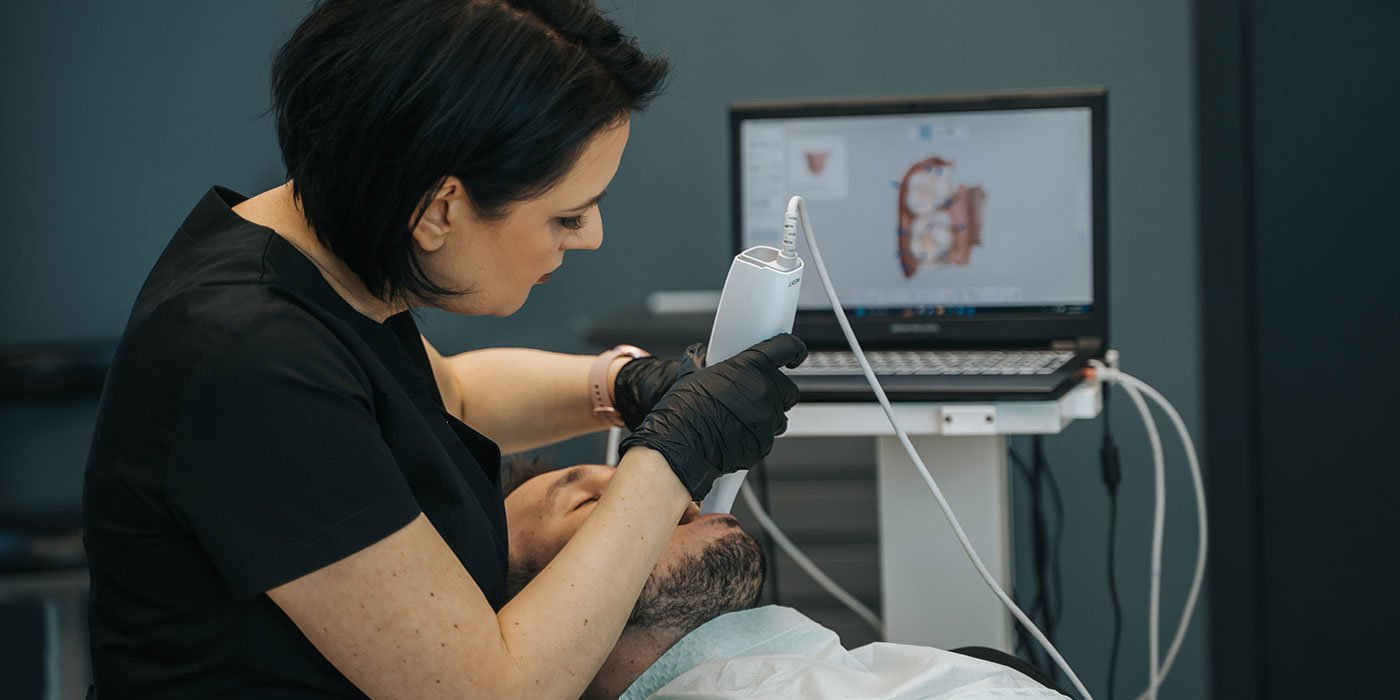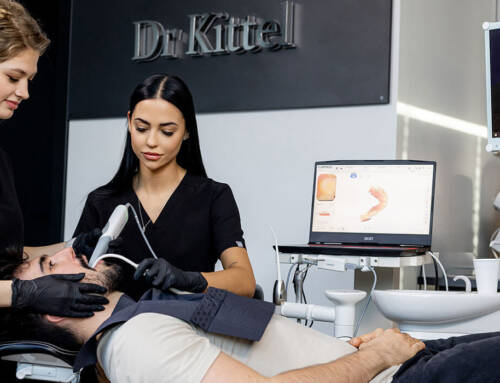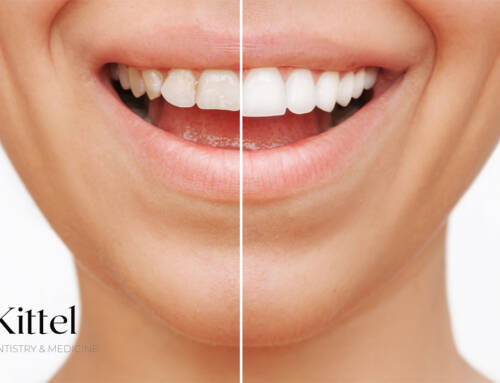In a good dental office, orthodontic treatment always begins with finding the causes of problems, and then selecting adequate treatment methods, increasingly often supported digitally. Modern orthodontics uses many tools that allow you to achieve the desired effects, regardless of the patient's age.
What proves successful orthodontic treatment? Patient comfort and maintaining a satisfactory effect in the long term. Although I am not an orthodontist myself, in my interdisciplinary team I participate in consulting orthodontic patients and developing comprehensive treatment plans together with orthodontists and other dental specialists. In our opinion, only a holistic approach to the problem and taking into account various causes of malocclusion, often having non-dental grounds (e.g. incorrect body posture, mouth breathing), can guarantee effective treatment. Modern tools and techniques help us in this.
Orthodontics without removing teeth - age is not a limit!
Patients whose teeth are crowded and crooked are more and more often very anxious not to remove their teeth while implementing the orthodontic treatment plan. In many cases, this is possible today. Of course, the easiest way to get rid of the problem is to remove it from the field of vision, but it is much better when the joints have natural support in the form of teeth (it will not always be possible to insert an implant). The methods used for this purpose depend on from the age of the patient. In small children, we use the orthotropy method, which largely consists in eliminating incorrect habits affecting the direction of bone growth. In older children, the method of coordinated multi-plane development of dental arches works well. For adults, we also have various tools to help eliminate or reduce extractions. These include self-ligating systems, orthognathic treatment based on the knowledge of occlusion, as well as other methods supporting orthodontic treatment and accelerating tooth movement, such as microimplants or corticotomy (a procedure based on the selective cutting of the bone plate).
Digital orthodontics - not only overlays
An equally important element of modern dentistry as the above-mentioned methods supporting orthodontic treatment is the use of digital technologies in orthodontic treatment. Their advantage is, above all, accuracy, speed, as well as greater patient comfort during the treatment of malocclusion. And although digital orthodontics is synonymous with overlay treatment for many, in my opinion it is a much broader concept. Of course, overlay treatment using digital devices such as 3D printers and milling machines is the quintessence of digital orthodontics today, but it is worth remembering that we also use digital technologies when treating with traditional braces.

Digital orthodontics is based primarily on performing scans inside the oral cavity and creating three-dimensional diagnostic models of teeth in specialized orthodontic programs. The intraoral scanner allows you to eliminate traditional impressions and obtain a digital 3D image of the patient's teeth and their mutual relationships. Thanks to this, we have access to the so-called occlusion map, informing about the distribution of forces in the bite. A number of calculations and analyzes can be performed on digital models, which, in addition to data obtained from digital X-ray imaging, allows for better planning of treatment. Digital data and images obtained immediately facilitate communication with the patient, allow to visualize the effects of treatment (digital smile design) and shorten its time.
Visualization of the effects of treatment de facto before its commencement is of great importance for the patient, mainly for psychological reasons.
Digital orthodontics is also a detailed and precise diagnostics using the digital radiography methods - cephalometric images and CBCT computed tomography - imaging among others number of bones or the shape and condition of the temporomandibular joints. Today, we can also monitor orthodontic treatment digitally. Using a smartphone and software using artificial intelligence algorithms, patients can monitor the progress of treatment on an ongoing basis and stay in touch with a specialist.
Finally, digitization is used in the printing of retainers necessary in the stabilization phase of treatment, most often in the form of overlays and splints.
Bearing in mind all the above methods that improve orthodontic treatment nowadays, it is worth remembering that no technologies can work without a human being, in this case an experienced orthodontist with support in the form of other specialists - team members. Digital dentistry will help to remove common human errors, and often also speed up treatment and make it more predictable and comfortable, but the human will remain the brain of the whole operation.







Leave A Comment